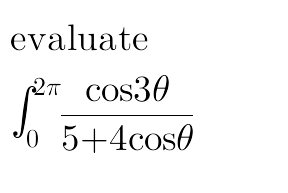
AllQuestion and Answers: Page 1890
Question Number 20857 Answers: 0 Comments: 0
$$\int\:\sqrt{\mathrm{sin}\:{x}}\:+\:\sqrt{\mathrm{cos}\:{x}}\:{dx} \\ $$
Question Number 20853 Answers: 0 Comments: 0
Question Number 20851 Answers: 2 Comments: 0
Question Number 20850 Answers: 1 Comments: 0
Question Number 20849 Answers: 1 Comments: 0
Question Number 20847 Answers: 1 Comments: 0
Question Number 20867 Answers: 1 Comments: 0
Question Number 20842 Answers: 1 Comments: 0
Question Number 20836 Answers: 0 Comments: 0

Question Number 20832 Answers: 2 Comments: 2
Question Number 20831 Answers: 1 Comments: 0
Question Number 20827 Answers: 1 Comments: 0
$${find}\:{cube}\:{root}\:{of}\:\mathrm{12167}\:{by}\:{divison}\:{method}. \\ $$
Question Number 20825 Answers: 0 Comments: 1

Question Number 20823 Answers: 1 Comments: 0

Question Number 20819 Answers: 1 Comments: 1

Question Number 20810 Answers: 0 Comments: 3
Question Number 20800 Answers: 2 Comments: 1
Question Number 20799 Answers: 1 Comments: 0
Question Number 20798 Answers: 0 Comments: 0
Question Number 20786 Answers: 2 Comments: 0
Question Number 20785 Answers: 1 Comments: 0
Question Number 20777 Answers: 0 Comments: 6
Question Number 20764 Answers: 1 Comments: 0
Question Number 20745 Answers: 1 Comments: 3
Question Number 20744 Answers: 1 Comments: 0

Question Number 20739 Answers: 1 Comments: 0
Pg 1885 Pg 1886 Pg 1887 Pg 1888 Pg 1889 Pg 1890 Pg 1891 Pg 1892 Pg 1893 Pg 1894
